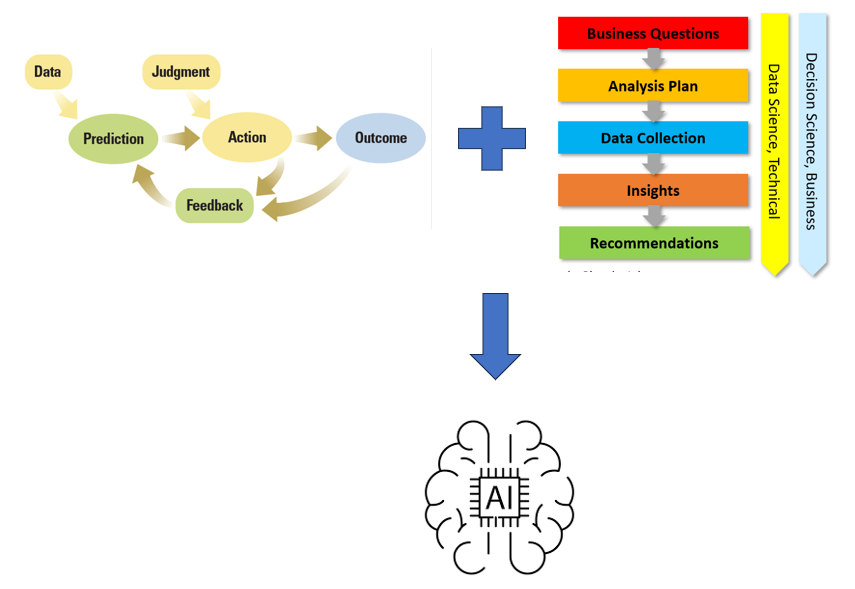The BADIR (Business Question, Analysis Plan, Data Collection, Insights, and Recommendation) framework and the AI Canvas framework share some common principles as they both provide a structured approach to AI and data science projects. Let’s explore how they can work together:
Alignment of BADIR and AI Canvas:
- Business Question:
Both BADIR and AI Canvas start with a focus on understanding the business key plan points and objectives. BADIR emphasizes the importance of aligning data science projects with business goals, while AI Canvas includes Problem Definition as a key component, ensuring that AI initiatives are strategically aligned.
- Analysis Plan:
BADIR’s Analysis Plan phase involves translating business goals into specific objectives and defining the scope of the data science project. In AI Canvas, this is reflected in Problem Definition, where the focus is on identifying and defining business challenges that AI can address.
- Data Collection:
In BADIR, Data Collection involves collecting and cleansing the data that will be used in the analysis / insights discovery. AI Canvas reinforces this concept with its Data Strategy component, which emphasizes the importance of identifying relevant data sources, ensuring data quality, and establishing data collection protocols.
- Insights:
Both frameworks emphasize the iterative nature of the implementation (insights discovery) phase. BADIR recognizes the need for iterative development, and AI Canvas advocates for scalable deployment and an iterative approach to model development, allowing for refinements based on real-world performance.
- Recommendations
The Recommendations phase in BADIR involves interpreting the findings and communicating insights. In AI Canvas, this corresponds to the Monitoring component, which focuses on continuous monitoring of AI models, tracking performance metrics, and ensuring sustained effectiveness.
Integration Strategies:
- Complementary Use:
Organizations can use BADIR and AI Canvas in a complementary manner. BADIR can be employed for its detailed focus on the data science lifecycle, while AI Canvas can provide a broader strategic perspective, ensuring that AI projects align with organizational goals and are effectively integrated into business processes.
- Project Planning:
BADIR can be applied for detailed project planning and execution, covering aspects like data exploration, model development, and interpretation of results. AI Canvas can guide the overall project strategy, ensuring that the project is aligned with the organization’s vision and objectives.
- Iterative Development:
Both frameworks support the concept of iterative development. BADIR’s emphasis on iterative development within its phases complements AI Canvas’s approach to iterative model development and deployment.
Considerations:
- Project Complexity:
The complexity of the project and organizational preferences may influence the choice of using one framework more prominently than the other. For complex projects, a combined approach might be beneficial.
- Organizational Culture:
Consider the existing organizational culture and processes. Some organizations may find that one framework aligns better with their existing practices, and others may opt for an integrated approach.
Conclusion:
The BADIR framework and AI Canvas framework can be used synergistically to provide a comprehensive and structured approach to AI and data science projects. By integrating the detailed lifecycle approach of BADIR with the strategic alignment and broader considerations of AI Canvas, organizations can enhance their ability to deliver impactful and strategically aligned AI solutions. The key is to adapt and tailor these frameworks to the specific needs and characteristics of each organization and project.
